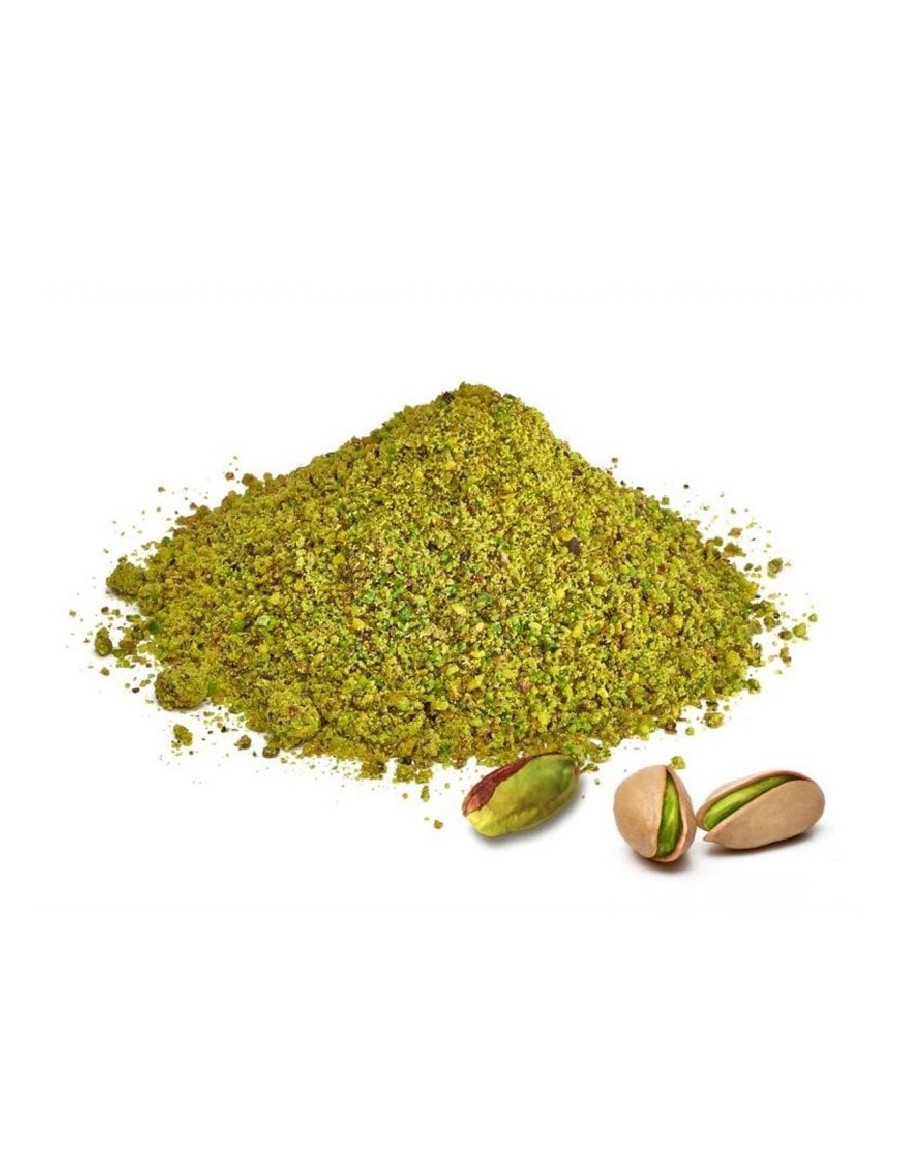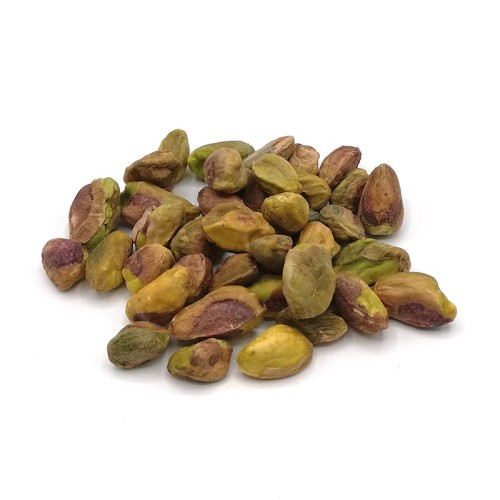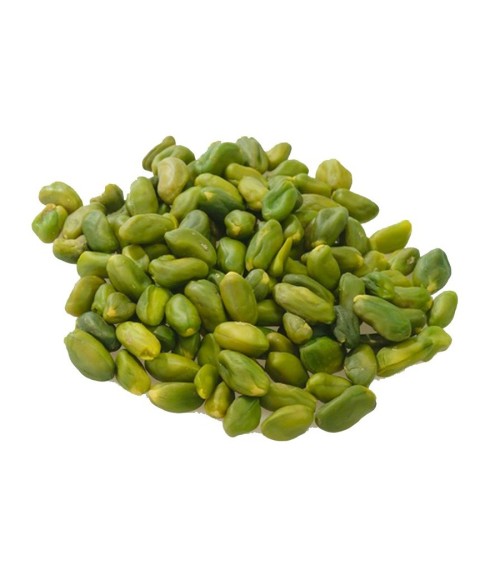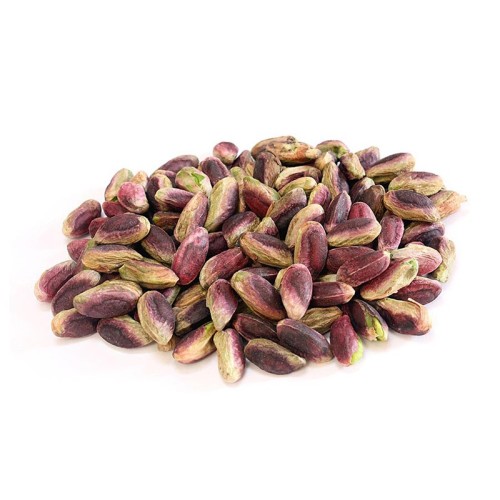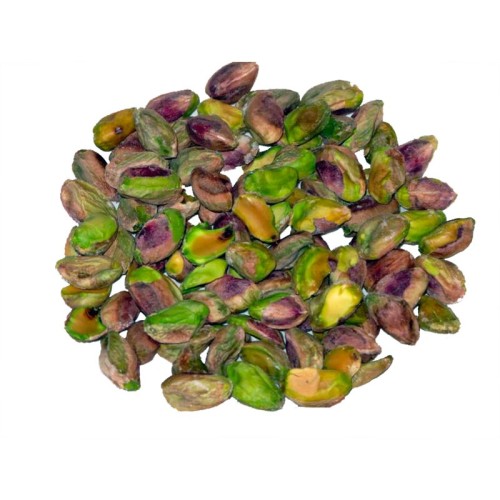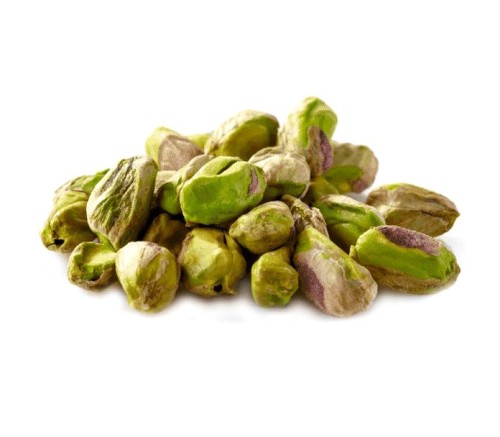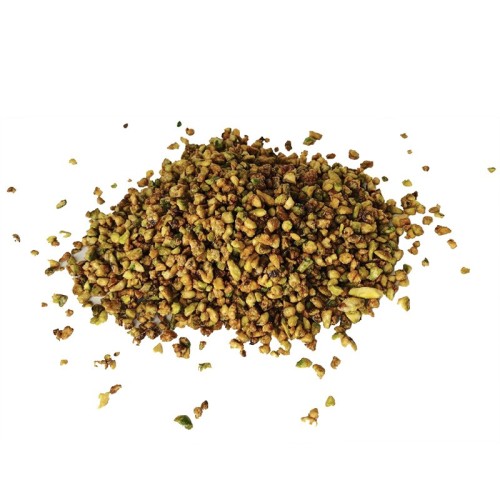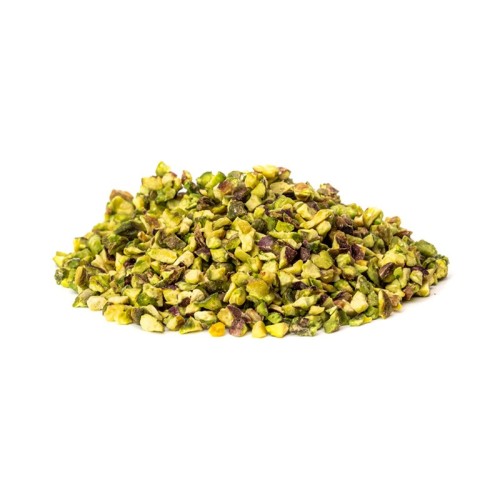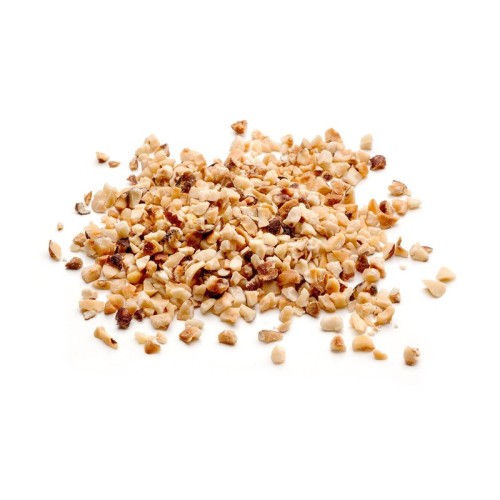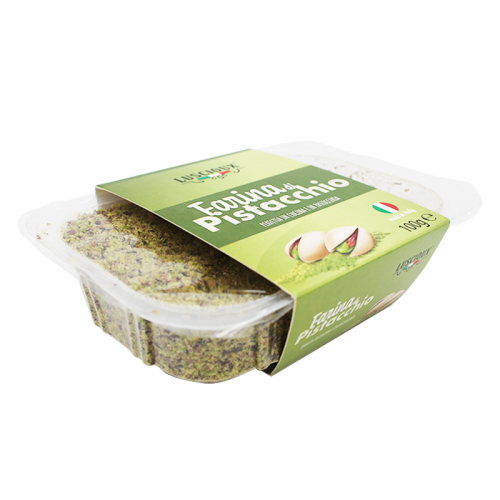Green Pistachio Flour
(€45.38 Per Kg)
High quality pistachio flour. Ideal for the preparation of desserts
 Security policy
Security policy
Transparency and reliability - Encrypted information (SSL Certificate)
 Delivery policy
Delivery policy
Fast shipping with delivery in 1- 4 working days.
 Return policy
Return policy
24/7
The 2-4 mm pistachio grain, obtained by chopping the shelled pistachios, contains 100% fine pistachio. Extremely versatile ingredient, useful for both sweet and savory recipes.
Data sheet
- Product
- Pistachio
Specific References
- ean13
- 8054134418912
Nutritional values
| Ingredients | PISTACHIOS. May contain traces of PEANUTS and other NUTS. |
| Method of conservation | Keep in a cold and dry place. |
| Nutrition declaration | average values per 100 g: |
| Power | 2486.96kJ / 594kcal |
| Fats | 48.40 g |
| of which saturated fatty acids | 6 g |
| Carbohydrates | 14 g |
| of which sugars | 9.70 g |
| Fibers | 10 g |
| Protein | 20.60g |
| Salt | 0.10g |
| Phosphorus | 464 mg (66% NRV*) |
| Copper | 0.71 mg (71% NRV*) |
| Vitamin B6 | 0.99 mg (71% NRV*) |
| Directions | The advice given IS NOT IN ANY WAY TO BE CONSIDERED OF MEDICAL/PRESCRIPTIVE VALUE. The information provided is for informational and informative purposes only, therefore they are not intended in any way to replace medical advice. In the presence of pathologies you should always consult your doctor. |
| Origin | Mediterranean area (Italy and Greece) |
| Nutrients | Phosphorus, Copper, Vitamin B6 |
| Vnr | *Nutritional Reference Value |
| Label and packaging | The images are included for illustrative purposes, the product may undergo changes based on stock availability and the selected weight. |
| Product | Pistachios |
Curiosity
The pistachio (Pistacia vera) is a tree of the Anacardiaceae family, with an average height of around 4-5 meters, but which can even exceed 8-10 meters and reach an age of 300 years. Pistachio grows in areas where winters are cool and summers are long and hot. It flowers in April-May and has female and male apetal flowers on various plants. The fruit is a drupe with an oval endocarp with a thin and hard shell, containing the seed commonly called "pistachio", which is bright green under a purple skin. The harvest takes place from the end of August to October. The plant bears fruit every two years and, for this reason, the plantations are made in different times and places, so as to be able to have an approximately constant harvest every year.
Pistachios are used both shelled and peeled , often toasted and salted, even in confectionery. to prepare ice creams, creams, drinks; and for the production of cured meats (mortadella Bologna, for example) or as a condiment for first and second courses.
The pistachio provides an oil used in pastry , in confectionery, as well as in cosmetics for its emollient qualities. In popular medicine, the habit of using the infusion of the bark as a refresher is widespread, especially in the areas of Sicily where the pistachio is grown. Legend has it that pistachio was grown by King Nabocodonosor in the Hanging Gardens of Babylon for his wife Amytis. In the first century AD, the emperor Vitellius introduced pistachios to Rome. Marcus Gavius Apicius includes pistachio in his classic recipe book of Early Roman cuisine.
Pistachio is a satisfying snack , very nutritious, rich in fiber and vitamins. A typical portion corresponds to about 30 grams of shelled pistachio, equal to about 160 calories. Depending on the size of the pistachios, this is equivalent to about 30-40 seeds, which is a satisfying snack with a high and prolonged sense of satiety due to the high content of proteins, fats and dietary fibres. In addition to being very tasty, it is the most nutritious type of nut as it contains eight important substances: thiamin, vitamin B6, copper, manganese, potassium, fiber, phosphorus and magnesium, in addition to the greatest quantities of polyphenolic antioxidants. Although the function of antioxidants is not yet fully known, the research conducted so far underlines the benefits of a healthy diet with foods containing antioxidants.
Sources
Nutspaper “The pistachio” 1/2009
Nutspaper “American Pistachios” 1/2011
History
Pistachio cultivation is very ancient: some archaeological finds have highlighted its use since the seventh millennium BC in Turkey.
The pistachio plant is native to Syria but according to some studies the area of its initial cultivation also includes Asia Minor, Palestine and Turkmenistan. The name "pistachio" derives from the Persian pesteh and the Arabic fustaq, which are two onomatopoeic names and recall the sound of the opening of the shell when the pistachio is ripe.
The pistachio is referred to in the Bible when it is said that Jacob sent various fruits in homage to the Pharaoh, including pistachios. Pistachio was also known to the Assyrians, Persians and Greeks as a medicinal drug. It was brought to Rome in AD 30 and later spread to Spain. The pistachio spread
it gradually included China, Caucasian Russia and, for about a century, the United States of America where the plant was introduced by the Office of Foreign Seed and Plant Introduction.
The largest pistachio producer is Iran , followed by the United States. Followed by Turkey, China, Syria, Greece, Italy, Afghanistan, Pakistan and India. Iran alone accounts for half of the world's production, California about twenty percent. The American pistachio is mainly consumed in the domestic market while the Iranian one finds its main market in Europe. The Turkish and Syrian pistachios are very good, however consumed almost exclusively in the internal market, where the product is sold fresh and where it is used for the production of oil.
Sources
- nutbooks
storage
You can store pistachio flour in cool, dry places, away from sources of heat and humidity. Here are 4 useful tips:
- The ideal condition for maintaining pistachio flour is in a refrigerated environment . Pistachio flour can also be stored without problems at room temperature during the winter season given the low temperatures. During the summer, on the other hand, it is advisable to keep it in the fridge or in the coolest possible places, as the increase in temperatures could favor the deterioration of the products.
- The ideal container in which to store pistachio flour is glass . In fact, thanks to its constitution it is impenetrable to chemical and gaseous agents, and having excellent thermal insulating capacity it maintains the initial temperature for a longer time compared to other materials. If the glass is colored, all the better: using colored glass prevents the entry of some wavelengths of light (including ultraviolet light) and therefore some nutritional and organoleptic characteristics remain unaltered.
- The type of closure of the container is also important: an airtight cap ensures that the food is protected from excessive contact with oxygen which can lead to lipid oxidation and which can be essential for aerobic bacteria.
- The environment should always be well ventilated : by ventilating the rooms, the internal humidity that escapes from the window is kept under control, guaranteeing the right balance, which helps to discourage the onset of moulds.
Property
100g of pistachio flour contain:
- Selenium (10 μg – 18% NRV)
- Zinc (2.1 mg – 21% NRV) Iron (3.4 mg – 24% NRV)
- Biotin (15 μg – 30% NRV)
- Magnesium (127 mg – 34% NRV)
- Vitamin K (31 μg – 41% NRV)
- Manganese (0.85 mg – 43% NRV)
- Potassium (960 mg – 48% NRV)
- Phosphorus (464 mg – 66% NRV)
- Vitamin B6 (0.99 mg – 71% NRV)
- Copper (0.71 mg – 71% NRV)
- Vitamin E (8.7 mg – 73% NRV)
- Protein (23g)
- Fiber (9.5g)
- Unsaturated fatty acids (44 g), monounsaturated (29 g) and oleic acid (27 g).
Please note that pistachios are included in the list of allergens (Annex 2 EU Reg. 1169/2011 and subsequent amendments)
No customer reviews for the moment.

